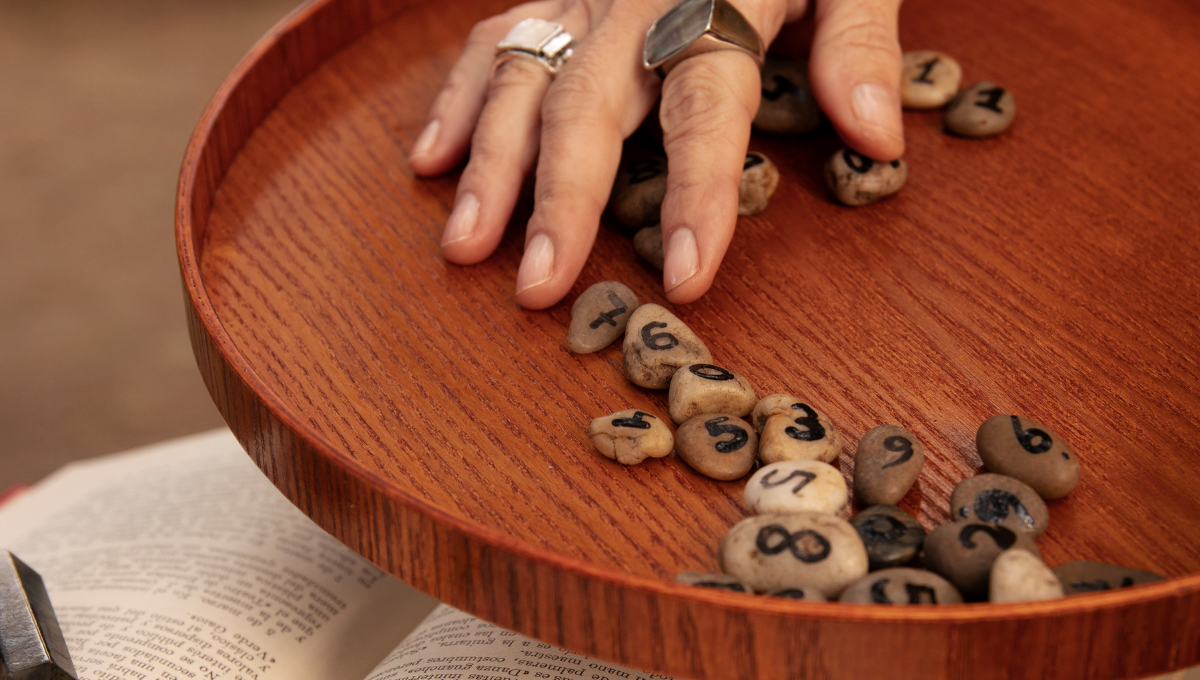BLOG
Cevurı: Origins, Meanings, and Cultural Significance of a Curious Word

Sometimes, certain words catch the curiosity of people not just for their meaning, but for the mystery behind their origins and usage. One such intriguing word that’s gaining attention in digital and linguistic circles is “cevurı”. From online forums to localized linguistic studies, “cevurı” sparks both confusion and fascination.
But what exactly is “cevurı”? Is it a word rooted in Turkish, a dialect variation, a misspelling, or perhaps a digital coinage? In this comprehensive guide, we explore every known aspect of the word cevurı—its possible meanings, origins, usage across languages, and the cultural or contextual clues that surround it.
Introduction to Cevurı
The word cevurı is not listed in standard dictionaries and lacks a concrete meaning in formal linguistic corpora. Despite this, the term appears across social media, blog comments, language forums, and even memes. It has become one of those “internet curiosity” terms that prompt people to dig deeper.
At its surface, “cevurı” looks like a variation or misspelling of another word—possibly “çeviri,” which means “translation” in Turkish. However, some instances hint that the word has taken on a life of its own, diverging from standard use into something more playful, creative, or culturally layered.
Etymology and Possible Linguistic Roots
A Hypothesis in Turkish
A strong candidate for the root of “cevurı” is the Turkish word “çeviri”, which translates to “translation” in English. Turkish uses Latin script, and the letter ç (pronounced as “ch” in English) often gets mistyped or misrepresented in digital formats due to keyboard limitations.
If we consider:
çeviri → actual Turkish word meaning “translation”
cevuri/cevurı → possible mistyped or reimagined form of “çeviri”
It becomes plausible that “cevurı” originated from typographical errors in transliterating or typing “çeviri,” especially in environments where Turkish-specific characters like “ç” or “ı” (dotless ‘i’) are unavailable.
The Digital Origins of the Word “Cevurı”
Much of the current usage of cevurı appears to be concentrated in online spaces, particularly:
Language learning forums
Social media comments on translations
Turkish-English translator websites
Reddit threads about linguistic confusion
Meme culture centered around bad translation
For example, in some Facebook groups or Reddit threads focused on learning Turkish, users may joke about “cevurı” being the “funny cousin” of “çeviri.” In that sense, it becomes part of a humorous linguistic subculture.
Cevurı in Turkish Language Context
The Turkish Alphabet
To fully understand the transformation from “çeviri” to “cevurı”, we must consider the Turkish alphabet, which includes:
Unique letters like ç, ş, ğ, and ı
“ı” (dotless i) vs. “i” (dotted i) — a crucial difference
When users write Turkish using a standard QWERTY keyboard without Turkish character support, they often substitute:
ç → c
ı → i
or simply type phonetically as best they can
Thus, çeviri → cevuri is a predictable misspelling.
However, in some cases, we find cevurı—a more puzzling form, with a mix of the correct and incorrect characters. This suggests a blend of mistake and adaptation, possibly turning the word into a new internet slang.
Spelling Confusion: Cevurı vs. Çeviri
Here’s a breakdown of the potential confusion:
Actual Word Misspelling Variant Notes
çeviri cevuri Common misspelling due to keyboard limitations
çeviri ceviri No Turkish characters, but closer to original
çeviri cevurı A mix of substitutions—possibly accidental or playful
The frequent substitution of “ı” (dotless i) and “i” further complicates automated translation and spell-check processes, leading to widespread miscommunication or reinterpretation.
Usage in Online Platforms
Social Media
On platforms like Twitter or TikTok, “cevurı” is often used as a hashtag or caption in humorous contexts:
When machine translation fails
When someone posts a hilariously wrong subtitle
As a self-deprecating tag by Turkish speakers commenting on their own mistranslations
YouTube Comments
In multilingual music videos or K-drama clips, commenters sometimes jokingly refer to subtitles as “cevurı” when the translation is awkward or clearly done by an auto-translator.
Cevurı in Popular Culture and Memes
The internet loves a good inside joke, and “cevurı” has started appearing in Turkish meme pages and image macros. These memes typically highlight:
Mistranslated fast food menus
Funny subtitles in pirated movie torrents
Satirical “bad translator” screenshots
The word is used like a badge of poor translation—akin to saying “Engrish” or “Googlish” in English-speaking communities.
Linguistic Theories Around Cevurı
Some amateur linguists argue that cevurı represents a folk linguistic artifact—a made-up or corrupted form of a real word that becomes accepted in subcultures or informal communities.
This isn’t new. In many languages, mistaken forms evolve into accepted slang, especially in online communication.
Consider:
“Teh” instead of “the” in early internet chat
“Pwned” instead of “owned” in gaming circles
“L33t speak” from early hacker culture
In this light, cevurı could be part of Turkish internet speak, combining playful error with a shared cultural understanding.
Semantic Analysis and Interpretations
While “cevurı” has no dictionary meaning, it can be semantically associated with:
Mistranslation
Lost-in-translation humor
Digital Turkish-English communication
Linguistic adaptation or failure
It has grown beyond just a typo—it now symbolizes an experience or mood, similar to how words like “cringe” or “vibe” carry emotional weight in modern slang.
Cevurı as a Symbol of Language Evolution
Language isn’t static—it evolves with culture, technology, and human error. In the age of memes and machine translation, new forms like cevurı represent how non-standard usage can lead to new linguistic identities.Just as emoji became part of text-based language, “cevurı” becomes a textual symbol of multilingual digital life, reflecting how people engage with translation technology and cultural exchange.
Misuse or Innovation? Academic Viewpoints
While there is limited academic literature specifically on “cevurı,” broader research on digital language mutation supports its relevance.
Scholars have noted that:
Misspellings in online communities often develop into slang or memes.
Digital environments (texting, tweeting, etc.) encourage phonetic typing.
Multilingual keyboard issues contribute to hybrid language forms.
In that framework, cevurı is a perfect case study.
Future Implications and Usage Trends
As AI translation tools and multilingual apps become more sophisticated, words like cevurı might fade—or become relics of an earlier digital era. However, their existence teaches valuable lessons:
Language is not just about accuracy; it’s also about context and emotion.
Digital slang reflects real linguistic pressures, such as keyboard limitations or cultural nuances.
Playful innovation, even if unintentional, can lead to new forms of expression.
Cevurı may continue to exist in memes, ironic jokes, or as shorthand for “bad translation” among Turkish speakers online.
Conclusion
At first glance, “cevurı” appears to be nothing more than a typographical mistake.. From mistaken translations and quirky memes to cultural adaptation and linguistic play, the journey of cevurı illustrates how language—especially in the digital world—is always shifting, evolving, and redefining itself.
Whether you’re a linguist, a meme lover, or a language learner, the tale of cevurı serves as a reminder: sometimes, the mistakes we make with words become just as meaningful as the words themselves.
BLOG
The Future of Online Advertising: Insights from Adsy.pw/hb3

As businesses scramble to find their footing, insightful research from Adsy.pw/hb3 shines a light on what the future holds. With innovative strategies emerging and technology redefining our approach, understanding these shifts is crucial for brands looking to thrive in this digital age. From influencer marketing taking center stage to optimization techniques, there’s no shortage of exciting developments reshaping how companies engage with consumers. Let’s dive into the current trends and explore what lies ahead in the world of online advertising.
Current trends in online advertising
Online advertising is constantly evolving. One of the most significant trends today involves personalization. Ads tailored to individual preferences capture attention more effectively than generic messages.
Mobile optimization is another key focus. With users spending hours on their smartphones, brands are prioritizing mobile-friendly content and platforms that engage consumers on-the-go.
Video content continues its upward trajectory as well. Short-form videos dominate social media feeds, drawing in viewers with creativity and immediacy.
Moreover, data privacy regulations shape advertising strategies profoundly. Businesses must navigate these rules carefully while still delivering targeted ads that resonate with audiences.
Sustainability has emerged as a critical factor for consumers when choosing brands. Companies increasingly highlight eco-conscious practices in their messaging to connect with socially aware customers.
The rise of influencer marketing and its effectiveness
Influencer marketing has rapidly transformed the digital landscape. Brands are leveraging the reach and authenticity of individuals with dedicated followings to engage consumers more effectively.
These influencers often create relatable content that resonates deeply with their audiences. This connection fosters trust, making followers more likely to purchase recommended products or services.
Moreover, influencer partnerships can be tailored to various demographics. Companies can target niche markets through micro-influencers who boast a loyal following in specific areas.
Measurable results also contribute to its growing popularity. Brands track engagement metrics such as likes, shares, and conversions from these collaborations.
As traditional advertising struggles for attention in crowded feeds, influencer marketing emerges as a fresh strategy—one that captures genuine interest while driving sales effectively.
How consumer behavior is changing and affecting online advertising strategies
Consumer behavior is evolving rapidly, reshaping the landscape of online advertising.
Social media plays a pivotal role in this shift. Users now rely heavily on reviews, recommendations, and peer feedback before making purchasing decisions. This means that businesses must foster genuine engagement rather than just pushing ads.
Mobile usage continues to rise as well. Shoppers expect seamless experiences across devices, prompting advertisers to optimize campaigns for mobile platforms specifically.
Additionally, personalization has become essential. As data analytics advance, tailored advertisements are increasingly effective at capturing attention.
The demand for sustainability also influences buying habits today. Brands aligning with eco-friendly practices resonate better with conscious consumers, necessitating shifts in marketing strategies accordingly.
Challenges and opportunities for businesses in the future of online advertising
The future of online advertising presents both hurdles and prospects for businesses. One major challenge is the evolving landscape of privacy regulations. As consumers become more vigilant about their data, brands must adapt their strategies to maintain trust while still reaching their audience effectively.
Conversely, this shift opens doors for transparent marketing practices that foster stronger relationships with customers. When companies prioritize ethical advertising and user consent, they stand out in a crowded market.
Additionally, technological advancements create opportunities for hyper-targeted campaigns. Utilizing AI tools allows businesses to analyze consumer behavior like never before. This can lead to highly personalized ad experiences that resonate deeply with potential buyers.
However, keeping pace with these innovations requires investment and agility. Companies willing to embrace change will find themselves ahead of the curve while those resistant may struggle to connect with modern audiences.
Conclusion
As we navigate the ever-evolving landscape of online advertising, staying ahead is crucial. Adsy.pw/hb3 provides valuable insights into emerging trends and strategies that can shape a brand’s future. The shift towards influencer marketing highlights the importance of authenticity in consumer connections.
Artificial intelligence continues to play an integral role, optimizing ad placements and maximizing reach through data-driven decisions.
While challenges do exist—such as increasing competition and evolving privacy regulations—opportunities abound for those willing to adapt. Brands must remain flexible and innovative, embracing new technologies while focusing on genuine engagement with audiences.
The future of online advertising holds immense potential for growth and creativity. By leveraging these insights from Adsy.pw/hb3, businesses can position themselves strategically to thrive in this dynamic environment.
BLOG
Top 3D Printing Stocks to Watch on 5StarsStocks.com in 2025

From creating aerospace components to personalized medical implants and even entire houses, 3D printing is no longer just a prototyping tool—it’s an industrial revolution in motion. Investors who recognize the transformative potential of this technology are looking toward 3D printing stocks, and websites like 5StarsStocks.com are helping them identify the top performers in this dynamic space.
If you’re seeking to future-proof your portfolio and get ahead of technological trends, this comprehensive guide to the Top 3D Printing Stocks to Watch on 5StarsStocks.com in 2025 is your roadmap to informed investing.
Why 3D Printing Matters for Investors
3D printing has emerged as one of the most disruptive technologies in recent history. Its benefits include:
Cost-effective manufacturing
Rapid prototyping and customization
Reduced material waste and environmental impact
Design freedom and innovation
Decentralized production models
According to market forecasts, the global 3D printing market is expected to grow from around $20 billion in 2023 to over $80 billion by 2030, representing a CAGR of over 20%. This robust growth is attracting institutional and retail investors alike—and 5StarsStocks.com is one of the platforms aggregating data to help investors pinpoint winning stocks.
What is 5StarsStocks.com?
5StarsStocks.com is a stock research and ranking platform that identifies high-performing stocks across emerging and high-growth sectors. It focuses on:
Performance metrics (revenue growth, EPS, price momentum)
Fundamental analysis
Sector-based filters
Ratings system (1–5 stars for investment potential)
Their curated lists—especially in innovation-driven industries like 3D printing—offer a valuable head start for investors seeking actionable insights.
Criteria Used by 5StarsStocks.com for Ranking 3D Printing Stocks
When 5StarsStocks.com ranks 3D printing stocks, it typically evaluates companies on a mix of:
Revenue Growth Rate
Market Penetration and Applications
R&D and Innovation Pipeline
Strategic Partnerships and Acquisitions
Profitability Metrics
Stock Valuation and Momentum
Using this framework, let’s dive into the top-rated 3D printing stocks to watch in 2025.
Top 3D Printing Stocks to Watch on 5StarsStocks.com in 2025
1. Stratasys Ltd. (NASDAQ: SSYS)
Market Cap: ~$1.2 billion
Rating on 5StarsStocks.com: ★★★★☆
Overview:
Stratasys is considered one of the founding pioneers in the 3D printing industry. Known for developing Fused Deposition Modeling (FDM) and PolyJet technologies, the company has an extensive footprint in industries like aerospace, automotive, and healthcare.
Why It’s on the Watchlist:
Expanded partnerships with giants like Boeing, Ford, and Siemens.
A solid R&D roadmap focused on sustainable materials and production-grade parts.
Recent acquisition of Origin and RPS to strengthen its photopolymer and SLA capabilities.
Investor Takeaway:
Stratasys is a mature player with steady growth and global market reach. It’s ideal for investors seeking stability in a volatile sector.
2. 3D Systems Corporation (NYSE: DDD)
Market Cap: ~$1.1 billion
Rating on 5StarsStocks.com: ★★★★☆
Overview:
It offers both industrial and healthcare-focused 3D printing solutions, including digital dentistry and bioprinting.
Key Drivers in 2025:
Strategic focus on healthcare applications, including bone and tissue printing.
Expansion into biomedical engineering, backed by FDA-cleared products.
A diversified revenue stream with increasing focus on high-margin services.
Investor Takeaway:
DDD is rebounding after years of restructuring and is now doubling down on healthcare—a high-growth niche in 3D printing.
3. Desktop Metal Inc. (NYSE: DM)
Market Cap: ~$400 million
Rating on 5StarsStocks.com: ★★★★☆
Overview:
Desktop Metal is revolutionizing 3D printing with its focus on metal and ceramic additive manufacturing. Its solutions enable mass production using metal powders, which are in high demand for aerospace and defense sectors.
Why It Stands Out:
Acquired EnvisionTEC to expand into dental and jewelry markets.
Introduced high-speed sintering for faster, scalable printing.
Investor Takeaway:
A riskier but innovative play. Desktop Metal is ideal for investors seeking high-risk, high-reward exposure to advanced manufacturing.
4. Materialise NV (NASDAQ: MTLS)
Market Cap: ~$600 million
Rating on 5StarsStocks.com: ★★★★☆
Overview:
Based in Belgium, Materialise is a unique company that focuses more on software and medical imaging than hardware. Their platforms are used for orthopedic planning, surgical simulation, and industrial printing.
Notable Strengths:
Revenue growth in medical software and services.
Partnerships with hospitals and research institutions.
High recurring revenue from SaaS-based licensing.
Investor Takeaway:
Materialise offers a different kind of 3D printing exposure—focused on high-margin software and healthcare innovation.
5. Nano Dimension Ltd. (NASDAQ: NNDM)
Market Cap: ~$700 million
Rating on 5StarsStocks.com: ★★★☆☆
Overview:
Nano Dimension is known for additive manufacturing of electronics, including 3D-printed circuit boards, antennas, and sensors. Their focus is on the defense, aerospace, and telecom sectors.
Why It Made the List:
Advanced AI-integrated AME technology.
Acquired DeepCube to enhance machine learning capabilities.
Tapping into the rapidly growing market for compact, custom electronics.
Investor Takeaway
A high-risk, high-reward stock with disruptive potential in electronic manufacturing.
6. Velo3D Inc. (NYSE: VLD)
Market Cap: ~$300 million
Rating on 5StarsStocks.com: ★★★☆☆
Overview:
Velo3D is a relatively new entrant that offers metal 3D printing solutions for high-performance parts in aerospace and space exploration. Clients include SpaceX and Honeywell.
Growth Catalysts:
Strong order backlog from aerospace clients.
Increasing adoption of laser-based powder bed fusion systems.
Investor Takeaway:
If you believe in the future of space, rockets, and next-gen engineering, VLD is a speculative but promising play.
Honorable Mentions
While not purely 3D printing companies, these firms are relevant due to their strategic investments in additive manufacturing:
HP Inc.
General Electric (NYSE: GE) – Through GE Additive, the company is innovating metal printing for jet engines.
Autodesk Inc. (NASDAQ: ADSK) – Provides design software widely used in 3D printing workflows.
Risks and Considerations
Many companies are still unprofitable.
Rapid technological obsolescence is common.
High capital expenditure and R&D costs.
Stocks can be volatile, often reacting strongly to news or quarterly results.
Always align your investment with your risk tolerance, time horizon, and diversification strategy.
Final Thoughts
As the global economy embraces automation, sustainability, and digital transformation, 3D printing is set to play a central role. Platforms like 5StarsStocks.com simplify the investment journey by helping you spot strong contenders in this high-potential space.Whether you’re a long-term investor seeking exposure to next-gen manufacturing or a short-term trader hunting for high-volatility momentum plays, the 3D printing stocks listed above offer compelling opportunities.if there was ever a time to explore 3D printing investments—it’s now. And with tools like 5StarsStocks.com, your journey is just a few clicks away.
BLOG
Real-World Applications of Primerem: Success Stories from Users

In a world where information overload is the norm, finding effective ways to learn and retain knowledge can feel like an uphill battle. Enter Primerem, a revolutionary tool designed to enhance memory retention and boost productivity across various fields. Whether you are a student striving for academic excellence or a professional seeking greater efficiency at work, Primerem offers innovative solutions tailored to your needs. This blog post delves into real-world applications of Primerem, showcasing inspiring success stories from users who have transformed their lives through its unique features. Get ready to explore how this groundbreaking platform is making waves in education, business, healthcare, and personal development!
Enhancing Learning and Retention.
Primerem is revolutionizing the educational landscape, making learning more engaging and effective. With its innovative approach, students can absorb information faster and retain it longer.
This tool utilizes techniques grounded in cognitive science to enhance memory recall.
Teachers have reported noticeable improvements in student performance and motivation. Interactive features keep learners engaged, transforming traditional classrooms into dynamic environments.
Whether it is mastering a foreign language or tackling advanced mathematics, Primerem adapts to different learning styles. Its personalized feedback helps students identify areas that need extra attention.
Students are not just memorizing facts; they are developing critical thinking skills essential for their future success. The shift from rote learning to understanding has made a significant impact on academic achievement across various age groups.
Primerem in Business: Boosting Productivity and Efficiency.
Primerem is transforming the business landscape by streamlining processes and enhancing collaboration. Companies leveraging this tool have reported significant improvements in workflow efficiency.
With Primerem, teams can easily share ideas and feedback in real-time. This fosters a culture of open communication, allowing for quick decision-making.
Many businesses are witnessing reduced operational costs too. By optimizing resource allocation, organizations can achieve more with less effort.
As companies continue to adapt to evolving markets, embracing tools like Primerem may be key to staying competitive in today’s fast-paced environment.
Primerem in Healthcare: Improving Patient Outcomes
Primerem is making waves in the healthcare sector Its innovative approach enhances patient engagement and encourages proactive health management.
Healthcare providers are leveraging Primerem to personalize treatment plans. By analyzing data trends, they can tailor interventions that resonate with individual needs.
Patients benefit from real-time feedback through the platform. This seamless communication fosters trust between patients and their care teams.
Moreover, Primerem’s analytics help identify potential health risks early on. Timely intervention can prevent complications, ultimately improving overall outcomes.
Increased satisfaction rates among patients highlight its effectiveness in creating a supportive healthcare environment where everyone plays an active role in their wellness journey.
Primerem in Personal Development: Achieving Goals and Overcoming Challenges
Primerem has become a game-changer in personal development. Users find it particularly effective for setting and achieving their goals.
Through its innovative features, Primerem helps individuals identify what truly matters to them. It encourages users to break down large ambitions into manageable tasks, making the journey less daunting.
The platform also offers motivational reminders that keep users engaged and focused. This ongoing support fosters accountability, ensuring that challenges are met head-on rather than avoided.
Many have reported significant improvements in self-discipline since using Primerem. Real-life stories illustrate how people have transformed their lives by applying the principles of Primerem. From mastering new skills to improving mental well-being, the impact is profound and inspiring.
User Testimonials and Success Stories:
Users of Primerem have shared inspiring stories that highlight its transformative power. One educator reported a marked improvement in student engagement after incorporating the platform into lesson plans. Students felt more motivated and retained information better.
In the business sector, a project manager credited Primerem with streamlining workflows. By using it to organize tasks, their team met deadlines consistently and increased overall efficiency.
Individuals on personal development journeys also sing its praises. A user mentioned achieving fitness goals they never thought possible by tracking progress through Primerem’s features. The accountability aspect made all the difference.
Healthcare professionals are also seeing tangible results. A nurse utilized Primerem to monitor patient care plans, leading to improved outcomes for those under their supervision.
These testimonials paint a vivid picture of how versatile and impactful Primerem has become across various fields. Each story underscores real change fueled by this innovative tool.
The Future of Primerem and Its Impact on Society
Imagine a world where personalized learning experiences become the norm in classrooms. Students could harness to enhance their understanding and retention.
In business environments, this tool can revolutionize workflows. Employees might use it to streamline processes and boost creativity in problem-solving sessions.
Healthcare is another frontier ripe for exploration. With advancements in data analysis, Primerem could help medical professionals tailor treatments based on individual patient histories.
On a personal level, more individuals may find success through goal-setting frameworks offered by . This empowerment can lead to enhanced well-being and increased productivity across society.
As we look ahead, it’s clear that the integration of Primerem into daily life has the potential to create significant positive changes across communities and industries alike.
Conclusion
The world of Primerem is rich with possibilities. Users across various sectors are harnessing its potential to make significant strides in their personal and professional lives. The success stories shared by educators, business leaders, healthcare professionals, and individuals on personal development journeys showcase the transformative power of this tool.
As Primerem continues to evolve, its impact on society will likely grow even more profound. With every new user experience documented, we gain insights into how it can be applied creatively and effectively in diverse contexts.
Embracing tools like Primerem can pave the way for innovative solutions that enhance learning, boost productivity, improve patient care, and foster individual growth. As awareness spreads about its capabilities and benefits, more people may find themselves inspired by these success stories to explore what has to offer in their own unique circumstances. The journey has just begun for many; the possibilities are truly limitless.
-

 HEALTH3 months ago
HEALTH3 months agoMega-Personal.net Health Archives: The Ultimate Guide to Health Information and Resources
-

 NEWS4 weeks ago
NEWS4 weeks agoForestry Development Authority: Guardians of Our Forests
-

 FASHION4 months ago
FASHION4 months agoWhy Fashion Is Important to People: A Deep Dive Into Its Cultural, Psychological, and Social Impact
-

 BLOG4 months ago
BLOG4 months agoExploring the Revolutionary Potential of New Software 418DSG7
-

 CRYPTO4 weeks ago
CRYPTO4 weeks agoCrypto30x.com: A Comprehensive Investigation Into the 30X Returns Crypto Platform
-

 CRYPTO3 months ago
CRYPTO3 months agoLessInvest.com Crypto: A Comprehensive Guide to Smart Cryptocurrency Investing
-

 CRYPTO4 months ago
CRYPTO4 months agoWhich Crypto Has 1000x Potential? A 2025 Investor’s Deep Dive into the Next Crypto Explosion
-

 NEWS4 weeks ago
NEWS4 weeks agoTecnoregio News: Your Ultimate Guide to Innovation, Industry Updates, and Regional Technology Insights
